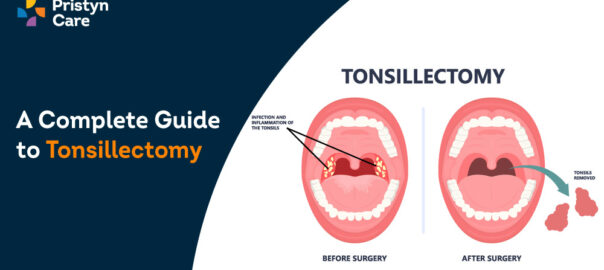![]() Views: 2,345
Views: 2,345
Signs of Deviated Nasal Septum and What to do About It?
Dedicated Support at Every Step!
Our Doctors are available 24 hours a day, 7 days a week to help you!
The deviation can be minor that you’d not even notice any difficulty in breathing, or severe enough to be easily visible in the external shape of the nose. Most people have a deviated nasal septum without even knowing it. However, there are a variety of signs and symptoms that are prominent and can interfere with your breathing and overall health. In that case, ENT specialists often recommend deviated septum surgery also known as septoplasty which is a surgical procedure to correct the deviation in the nasal septum.
If you are experiencing frequent breathing issues, it is highly possible that you have a deviation in the nasal septum. Consult your family doctor or ENT specialist to know more about the condition of your nasal passage through diagnostic tests. Let us explore everything about the deviated nasal septum and the possible surgical procedures available based on the severity of the deviation.
Table of Contents
Self-Analysis and Symptoms of a Deviated Nasal Septum
A deviated nasal septum can be distinguished by the physical appearance of the nose. The deviation can be apparent in the case of a complex inclination. There is the self-diagnosis that involves self-analysis to check for the quality of airflow and breathing. However, diagnosis by the doctor is the only accurate way to determine the presence of inclination in the septum. Here are some signs that may suggest the possibility of a deviated nasal septum -
- If you plug one side of your nose with the index finger and breathe through the other, your breathing may sound congested or obstructed if you have a deviation in the nasal septum. You can do the same with the other nostril to check the quality of airflow and compare.
- If you are a side sleeper and prefer to sleep on one side for improved breathing, then it is highly likely that you are suffering from a deviated nasal septum.
- In case the shape of your nose is crooked due to a complex inclination in the septum, you may find it difficult to breathe from one side.
While self-diagnose is helpful in detecting early signs of the deviated nasal septum, it is not the most accurate way to be sure about the deviation in the nasal septum. You must look out for some of the following signs and symptoms that are a result of the septum deviation -
- Difficulty in breathing - Nasal misalignment or deviation in the septum makes it difficult for the air to pass through one of the nostrils. The obstruction can be more noticeable at night when you are trying to sleep.
- Frequent nosebleeds - The deviated nasal septum usually dries out the membranes in the nose due to lack of moisture. This can make you more prone to frequent nosebleeds.
- Frequent headaches - The congestion associated with nasal passages do not allow free flow of air can build-up a pressure making your head feel stuffy. Headaches and occasional facial pain can also occur due to pressure caused by the sinuses.
- Loud snoring and sleep apnea - The nasal congestion due to a deviated septum can lead to loud breathing and snoring which can be an unpleasant experience for someone who sleeps beside you. It can also contribute to sleep apnea, which is a serious condition that interrupts breathing during sleep.
- Repeat sinus infections - Since the deviated septum cause obstruction in the nasal passage, it makes you more vulnerable to sinus infections. In case of an allergy, your nasal symptoms are likely to get worse along with repeated sinus conditions.
No Cost EMI, Hassle-free Insurance Approval
Treatment for Slight Nasal Deviation
In case of slight nasal misalignment, the normal function of the nasal passage is not bothered to a great extent. The deviated nasal septum treatment can be an amalgamation of surgical and non-surgical methods depending on the complexity of the deviation. However, the surgical procedure aims to straighten the deviation in the nasal septum and has long terms health benefits whereas non-surgical methods are preferred to manage the symptoms of the deviated nasal septum.
Treatment for a slight deviation in the nasal septum usually involves medications and nasal strips to manage the symptoms due to congestion in the nasal passage. Some of the treatment options include -
- Decongestant nasal sprays - The obstruction in the nasal septum can be managed by using decongestants nasal sprays to minimize the swelling. Decongestants improve the nasal airflow significantly. However, you should not depend too much on these sprays as it can increase dependency making your condition worse in due course.
- Antihistamines - If the nasal congestion due to a deviated septum is followed by frequent allergies, ENT specialists usually recommend antihistamines. This medication prevents symptoms caused by allergies and inflammation inside the nostrils. Some of the common symptoms treated by antihistamines are runny nose, sneezing, itching in the nose, etc.
- Nasal steroid sprays - The ENT specialist generally prescribes nasal steroid sprays to manage inflammation due to dryness on the tissue lining inside the nasal cavity. It is advised to use nasal steroid sprays only after consulting your doctor.
Treatment for Complex Nasal Deviation
While we have mentioned a lot about the effective measure to manage the symptoms of slight deviation in the nasal septum, another treatment method ensures surgical correction of the nasal septum for long-term benefits. The surgical procedure to correct deviated nasal septum is called Septoplasty. Septoplasty is reconstructive surgery that is done when the symptoms of nasal deviation are immune to medications and other non-surgical options.
Unlike the treatment for a slight deviation in the nasal septum that can be managed using non-surgical treatment options, treatment for complex deviation demands surgery. The ENT surgeon makes a minimal incision on the septum and alters the bone and cartilage to straighten the deviated septum. The whole procedure can take around an hour to 90 minutes depending on the complexity of the deviation and the surgical experience of the surgeon. The surgeon may also insert silicone splints in each nostril to support the septum. Finally, the wound is shut using surgical sutures.
Septoplasty is very effective in reducing symptoms of a deviated nasal septum which impacts the quality of life. Septoplasty is done for medical reasons and should not be confused by rhinoplasty which is a cosmetic procedure to reshape the nose for aesthetic appearance. Your surgeon can perform a consecutive rhinoplasty along with septoplasty if required.
Read more: Septoplasty Procedure, Recovery & Cost
Conclusion
Many of us often experience obstruction while breathing but choose to ignore it. These symptoms can intensify if the cause of obstruction is due to a deviated nasal septum. Therefore, it is important to consult the ENT specialist for deviated nasal septum surgery for a permanent cure from the symptoms. One of the most effective treatments for deviated nasal septum is septoplasty. This surgical procedure ensures reduced obstruction in the airflow and offers long terms health benefits and improved quality of life.










